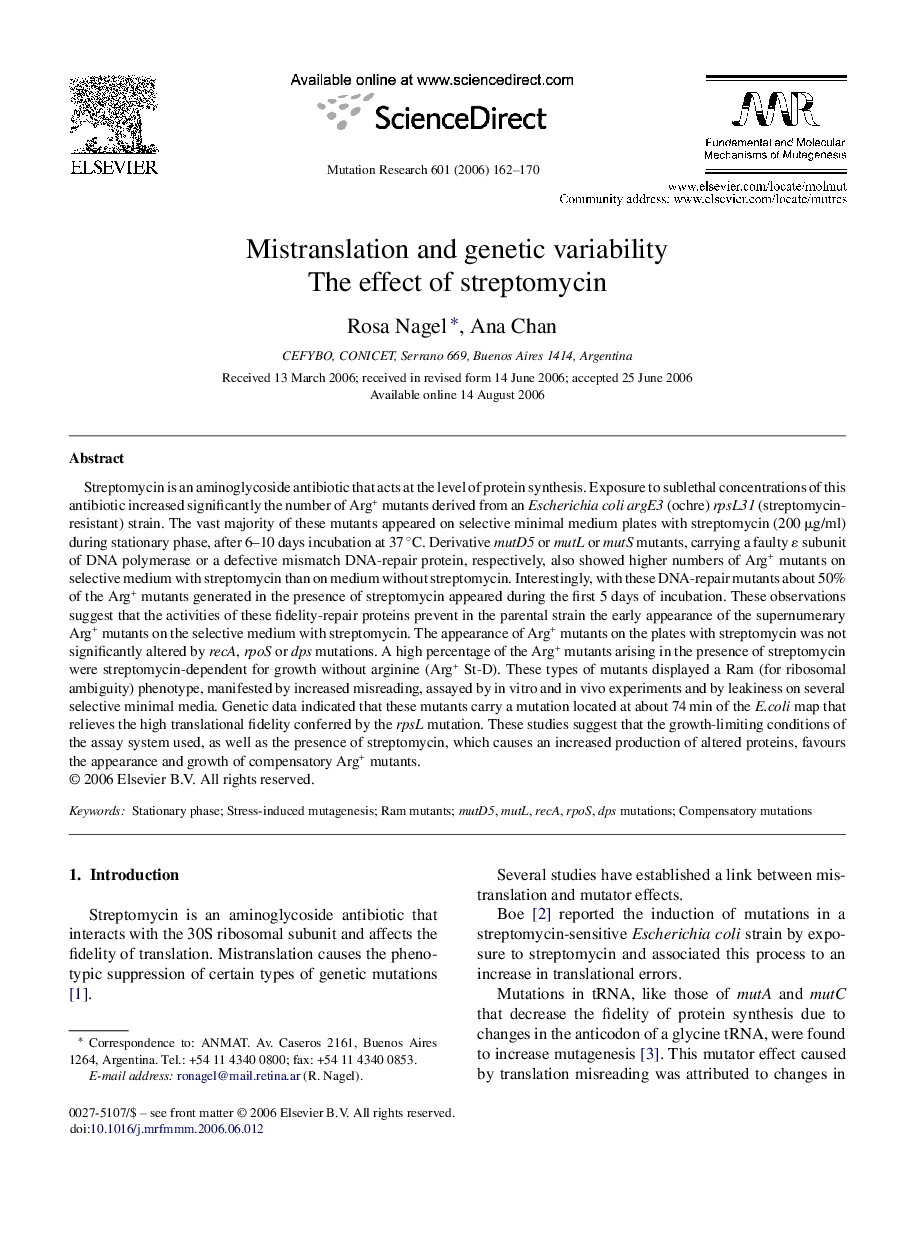| Article ID | Journal | Published Year | Pages | File Type |
|---|---|---|---|---|
| 2147574 | Mutation Research/Fundamental and Molecular Mechanisms of Mutagenesis | 2006 | 9 Pages |
Streptomycin is an aminoglycoside antibiotic that acts at the level of protein synthesis. Exposure to sublethal concentrations of this antibiotic increased significantly the number of Arg+ mutants derived from an Escherichia coli argE3 (ochre) rpsL31 (streptomycin-resistant) strain. The vast majority of these mutants appeared on selective minimal medium plates with streptomycin (200 μg/ml) during stationary phase, after 6–10 days incubation at 37 °C. Derivative mutD5 or mutL or mutS mutants, carrying a faulty ɛ subunit of DNA polymerase or a defective mismatch DNA-repair protein, respectively, also showed higher numbers of Arg+ mutants on selective medium with streptomycin than on medium without streptomycin. Interestingly, with these DNA-repair mutants about 50% of the Arg+ mutants generated in the presence of streptomycin appeared during the first 5 days of incubation. These observations suggest that the activities of these fidelity-repair proteins prevent in the parental strain the early appearance of the supernumerary Arg+ mutants on the selective medium with streptomycin. The appearance of Arg+ mutants on the plates with streptomycin was not significantly altered by recA, rpoS or dps mutations. A high percentage of the Arg+ mutants arising in the presence of streptomycin were streptomycin-dependent for growth without arginine (Arg+ St-D). These types of mutants displayed a Ram (for ribosomal ambiguity) phenotype, manifested by increased misreading, assayed by in vitro and in vivo experiments and by leakiness on several selective minimal media. Genetic data indicated that these mutants carry a mutation located at about 74 min of the E.coli map that relieves the high translational fidelity conferred by the rpsL mutation. These studies suggest that the growth-limiting conditions of the assay system used, as well as the presence of streptomycin, which causes an increased production of altered proteins, favours the appearance and growth of compensatory Arg+ mutants.
